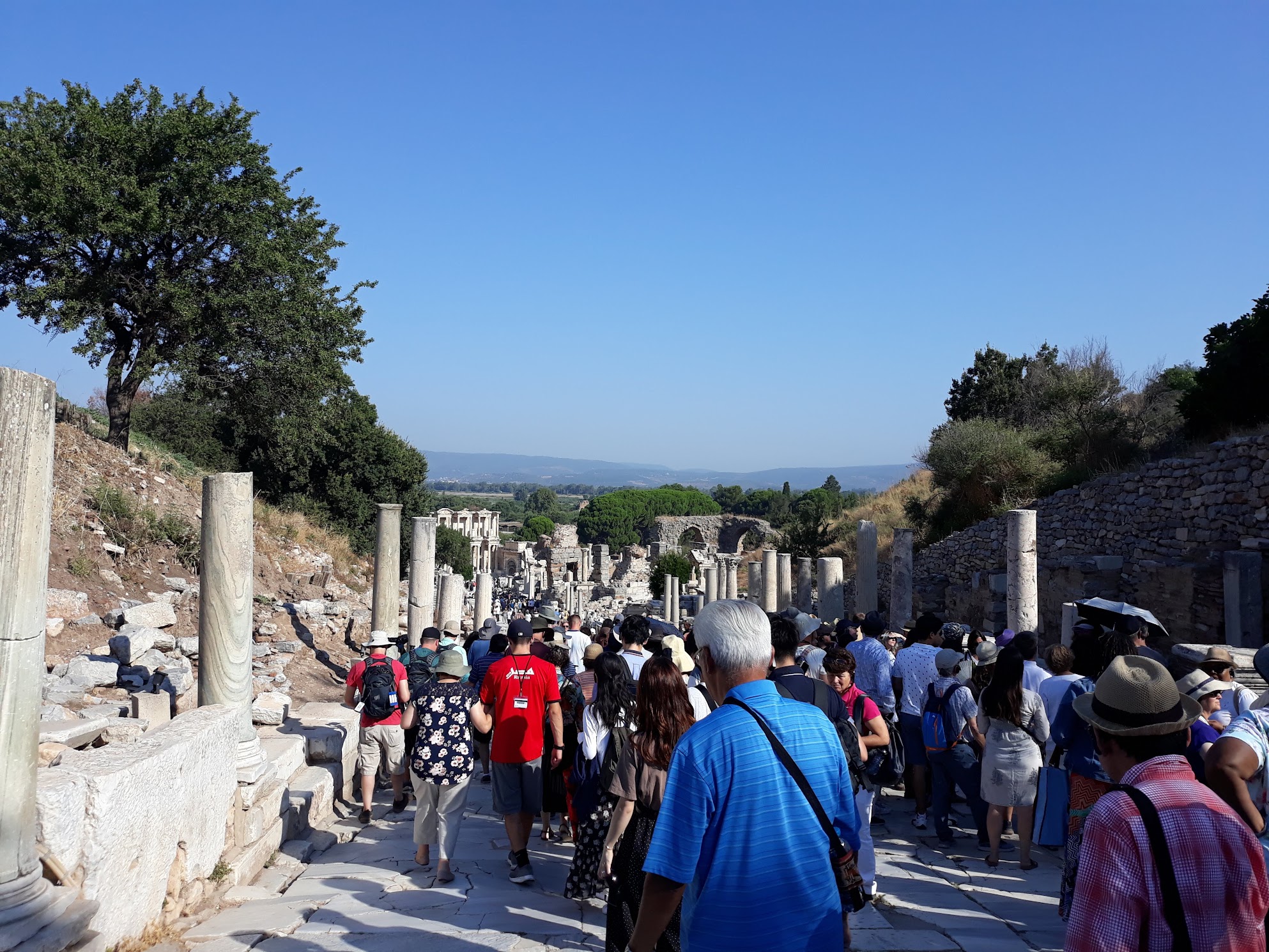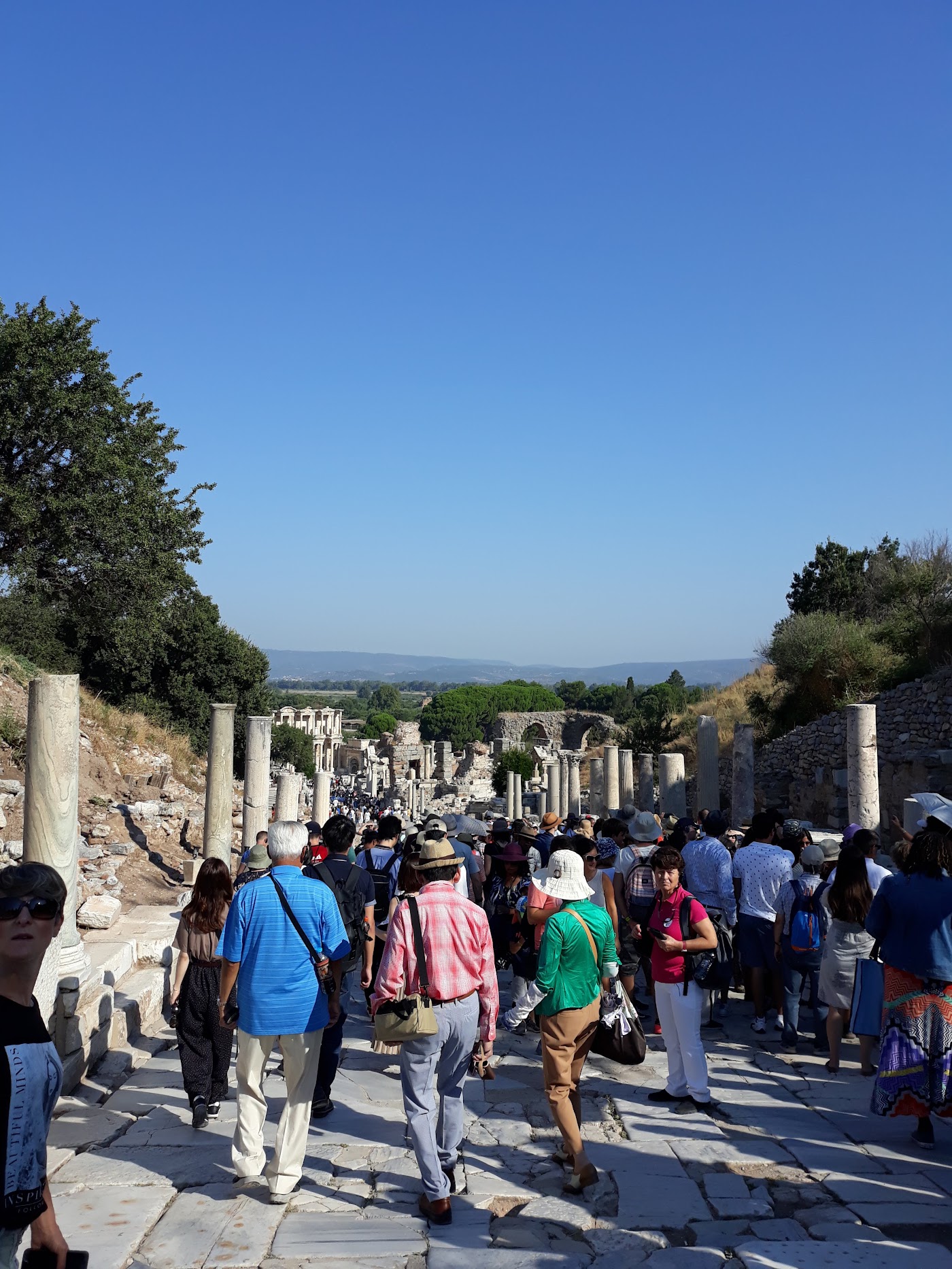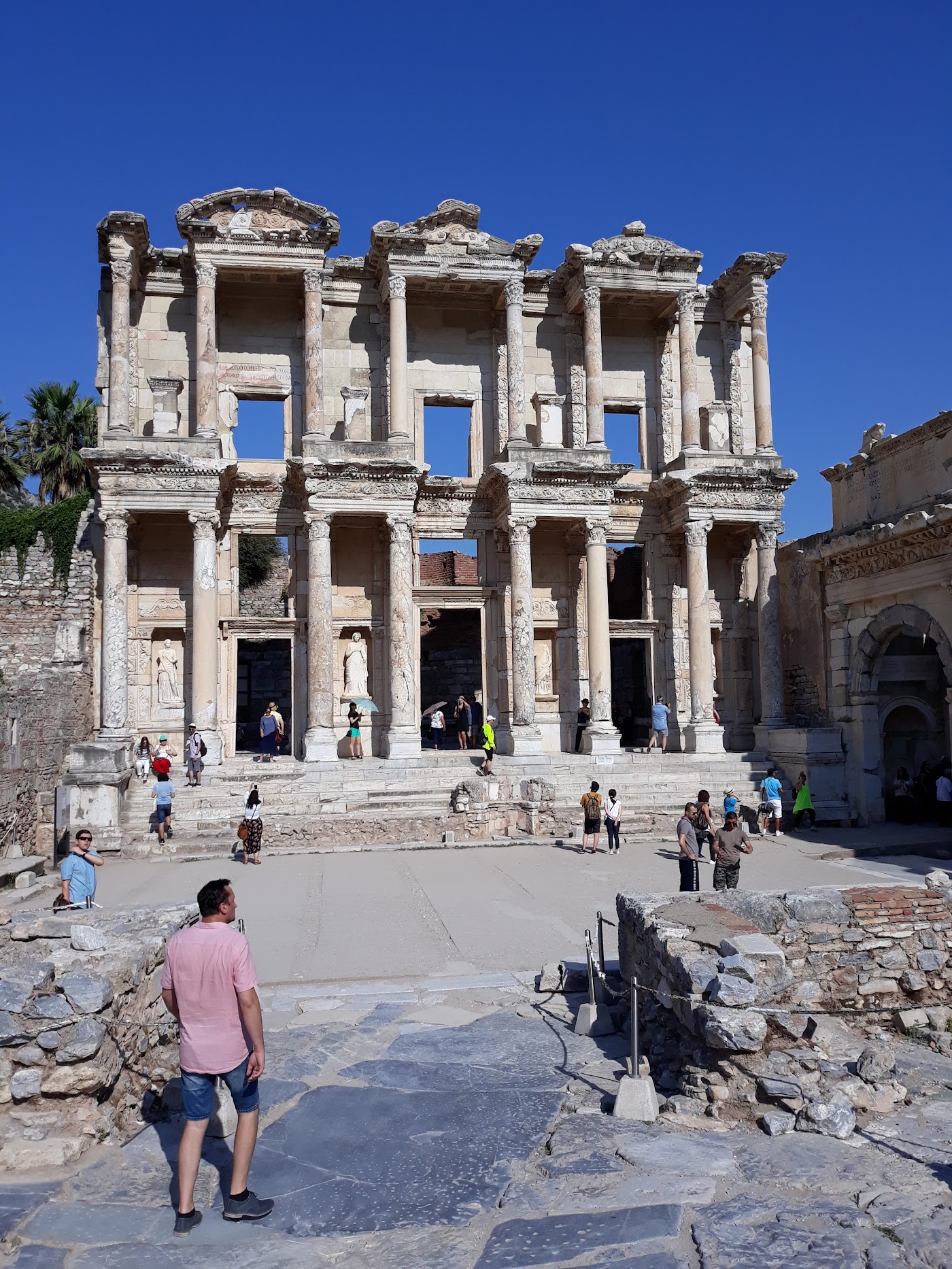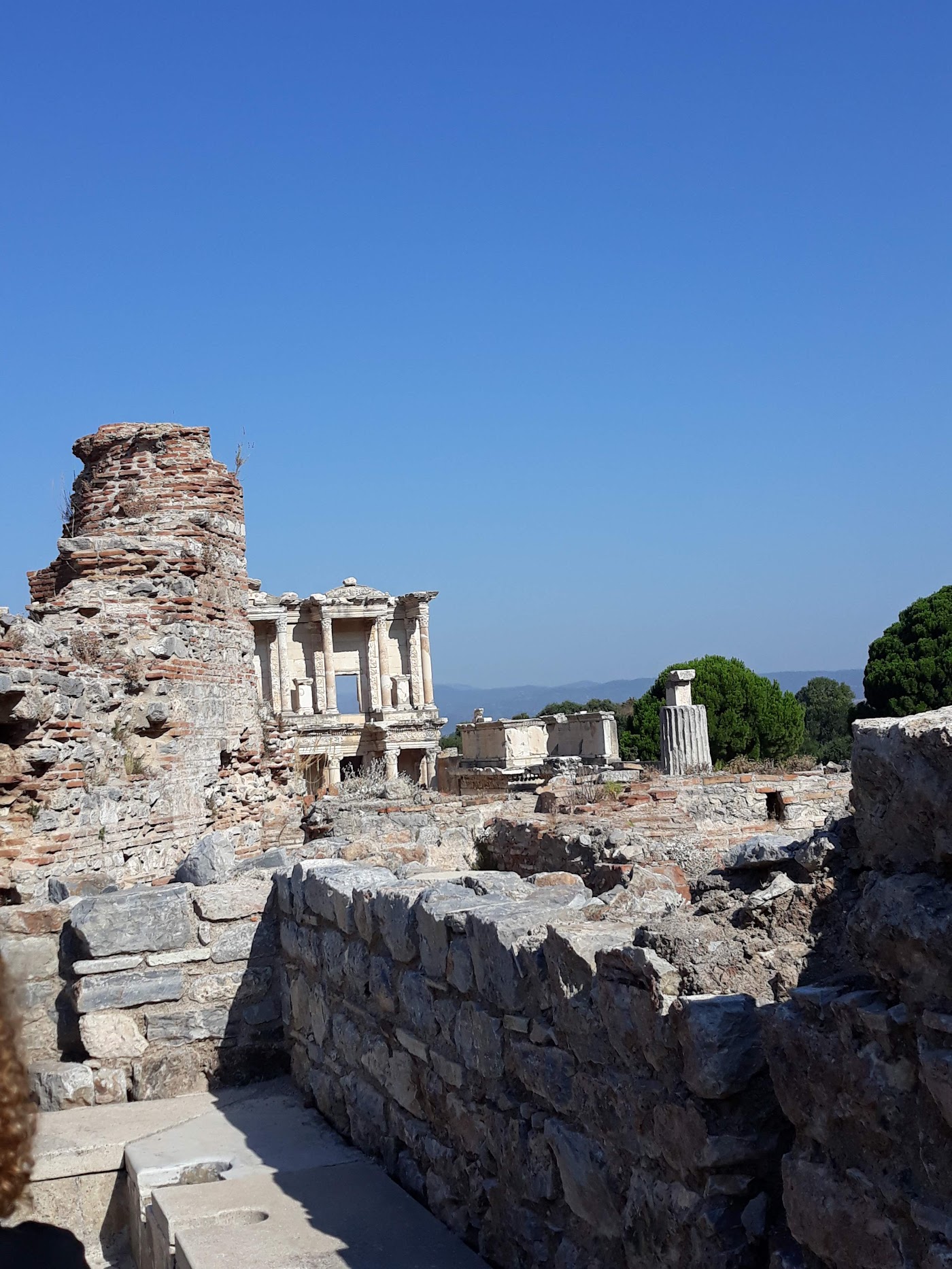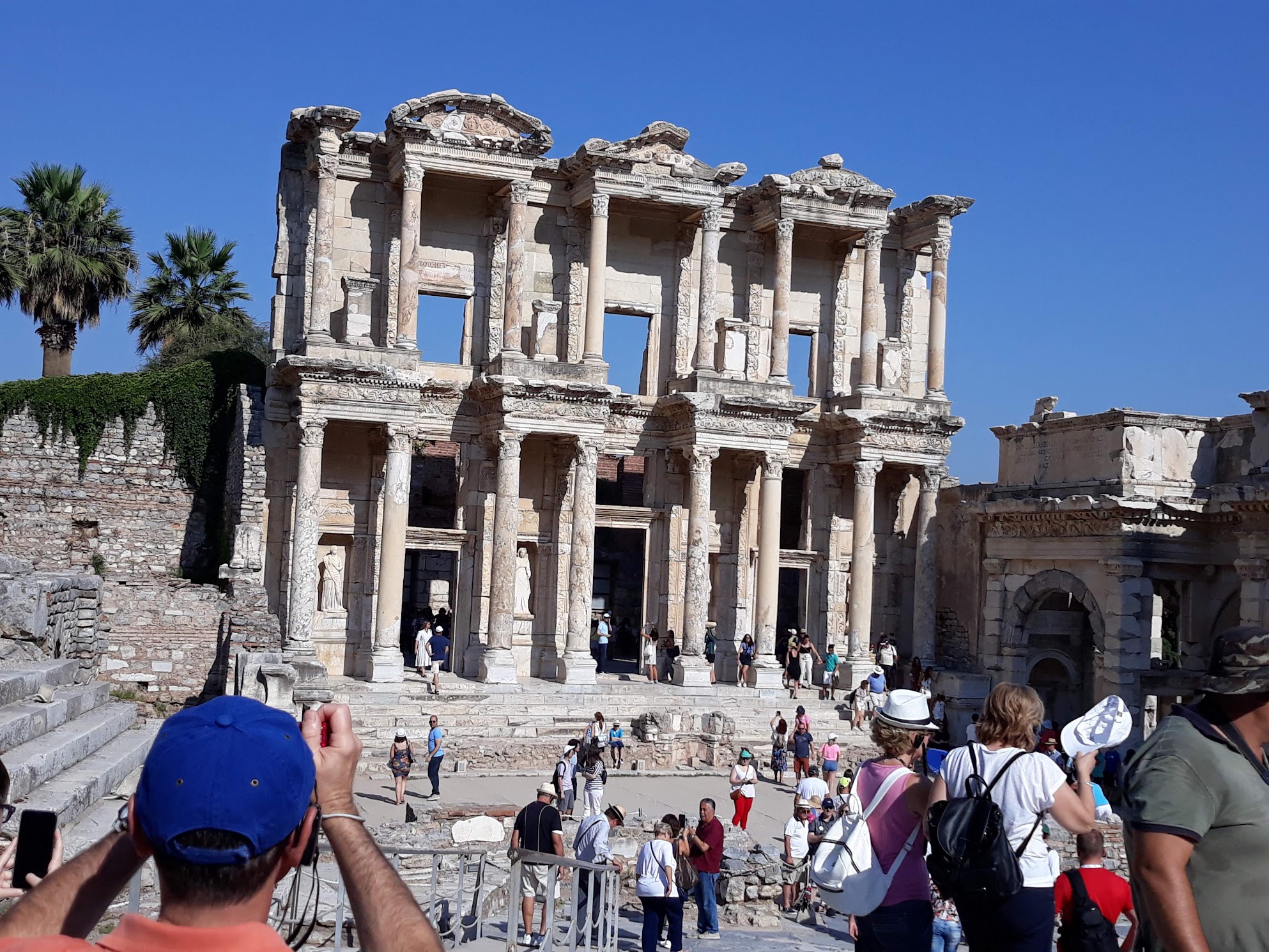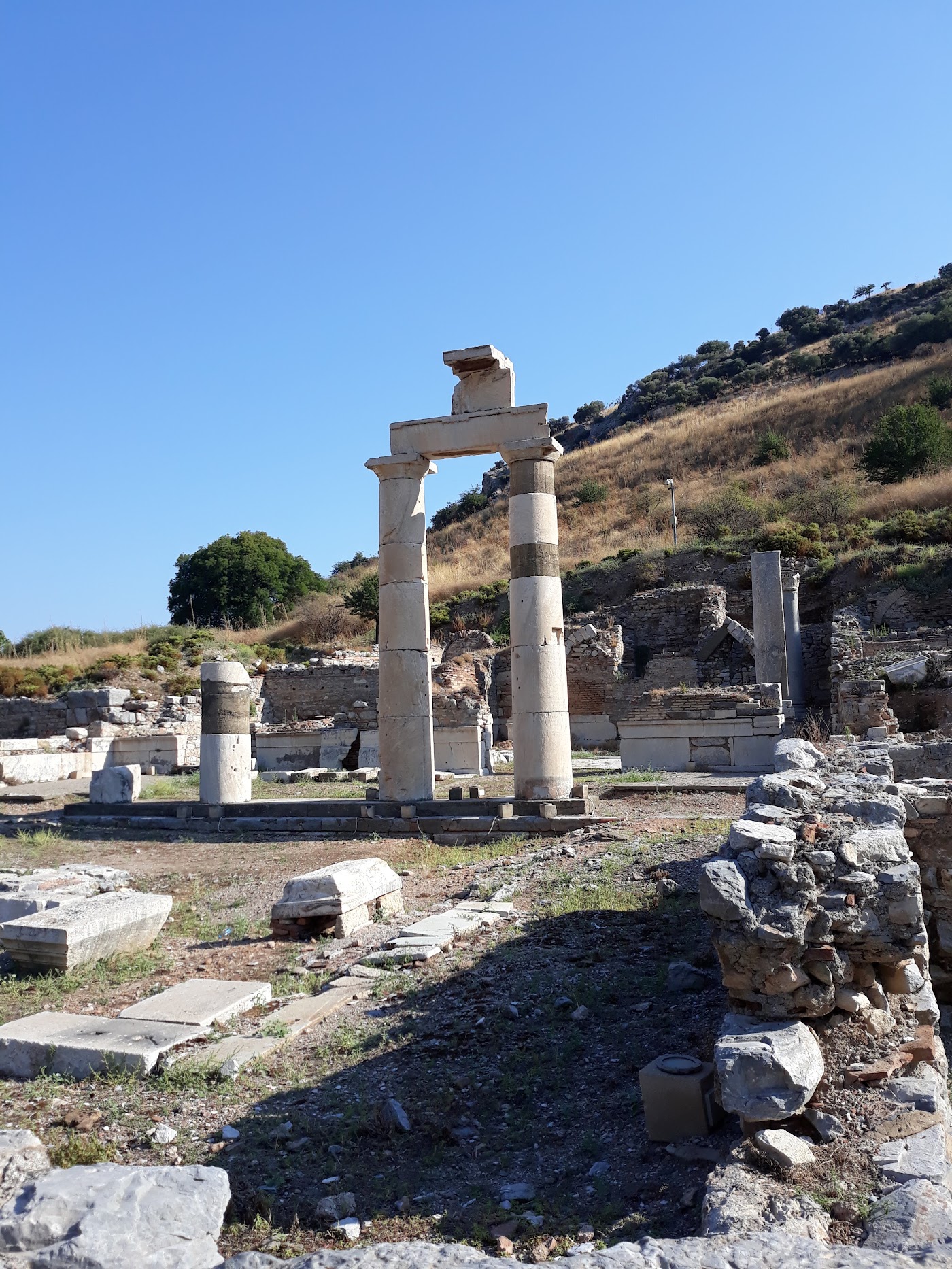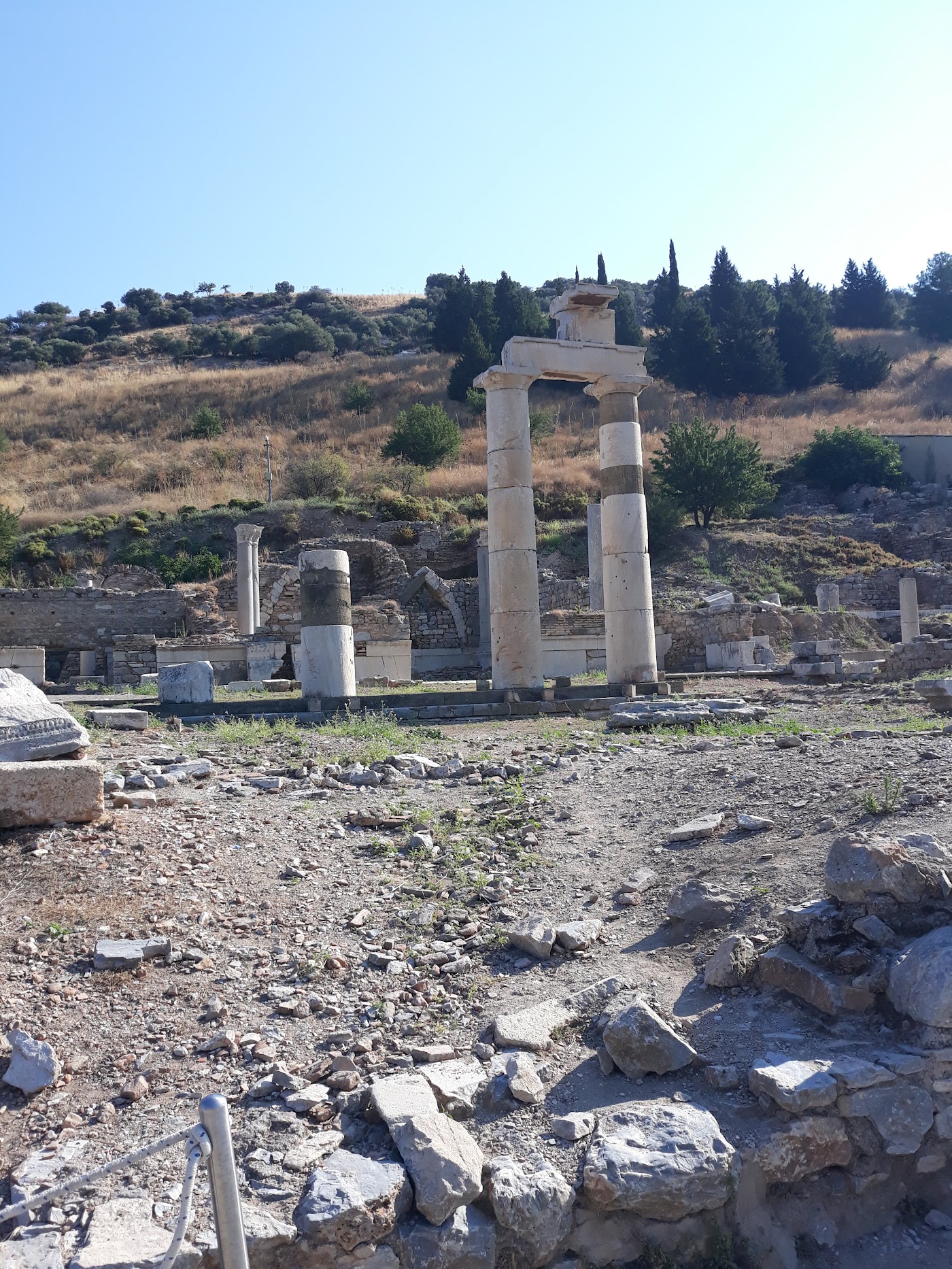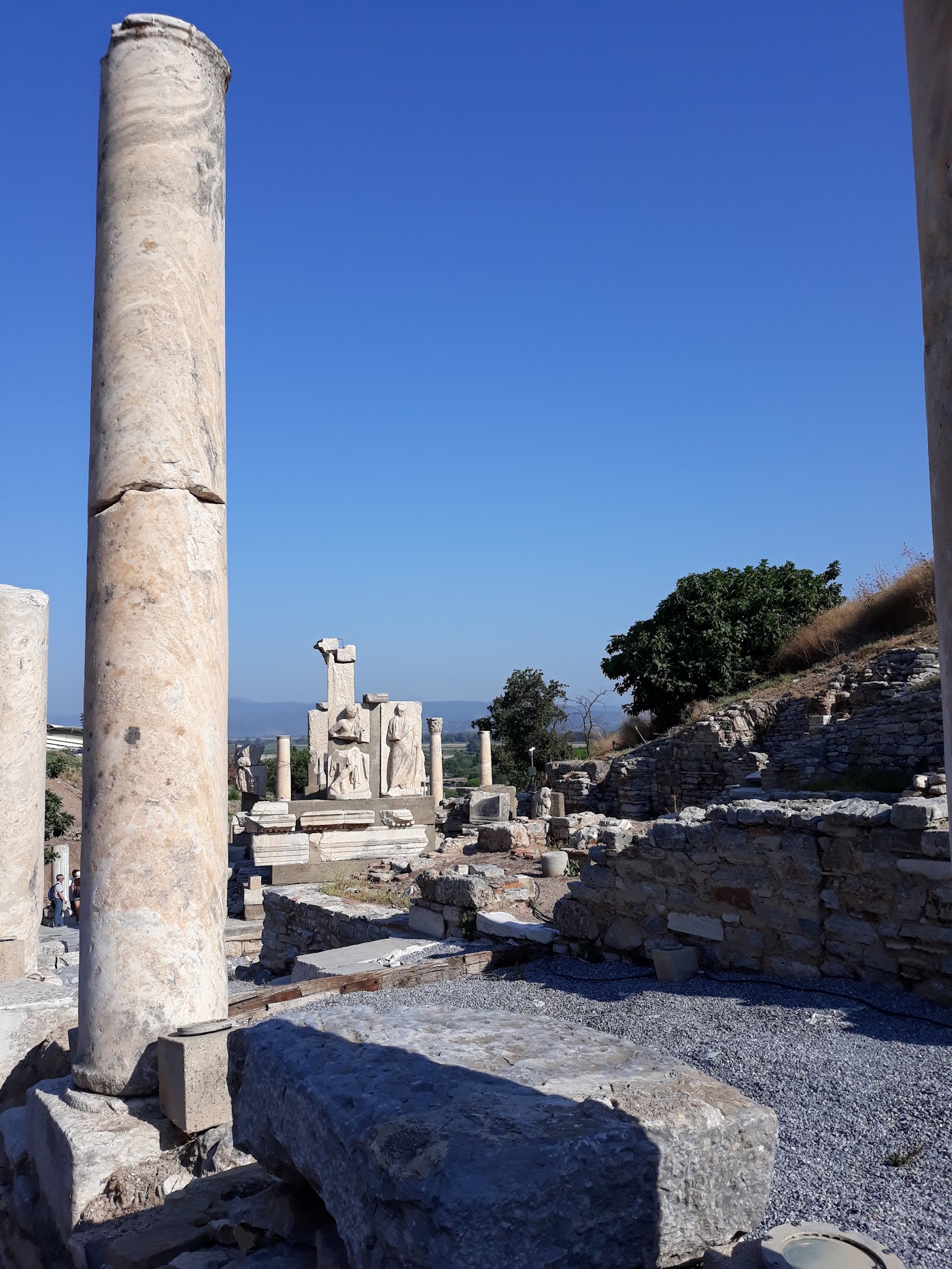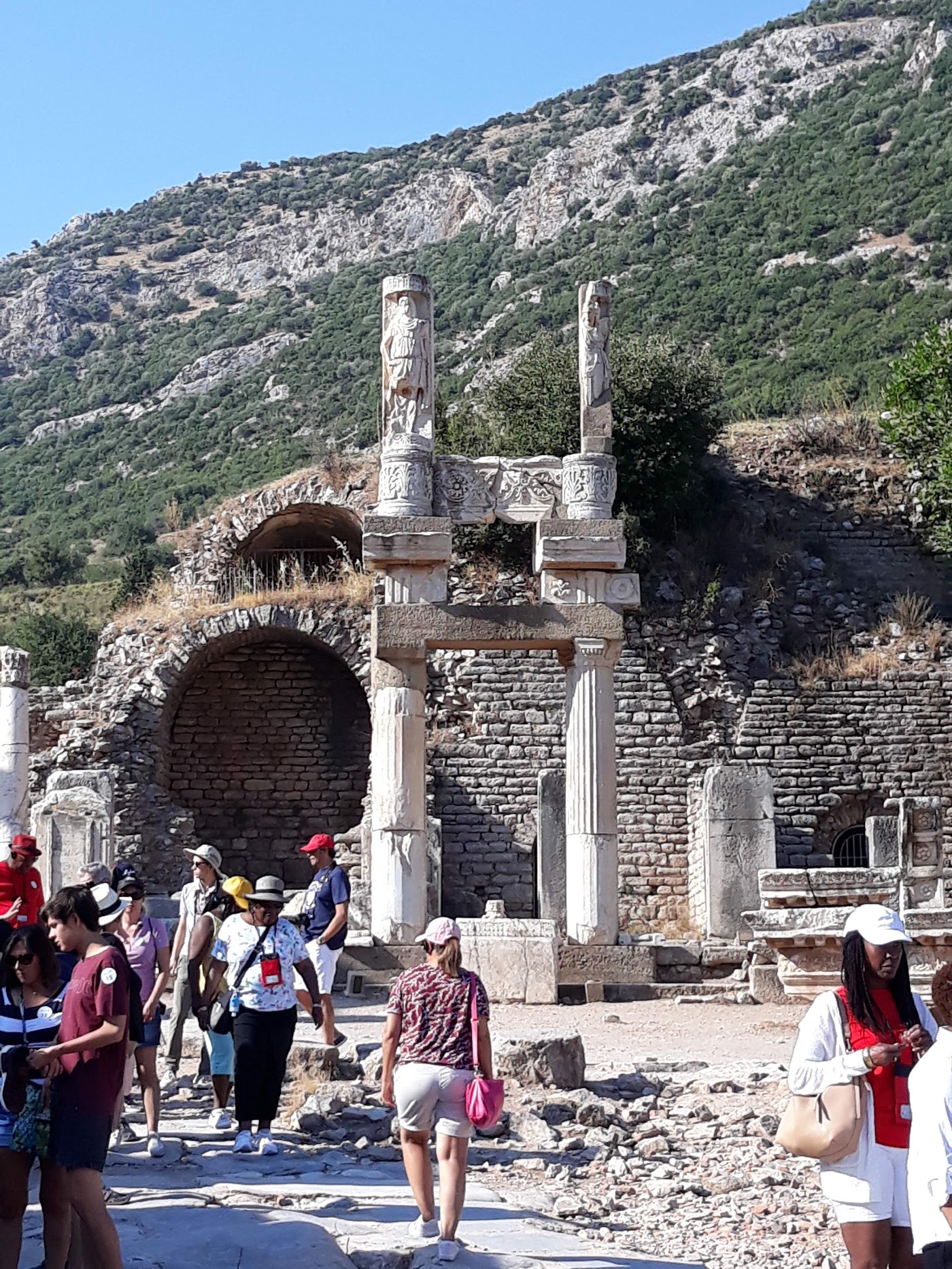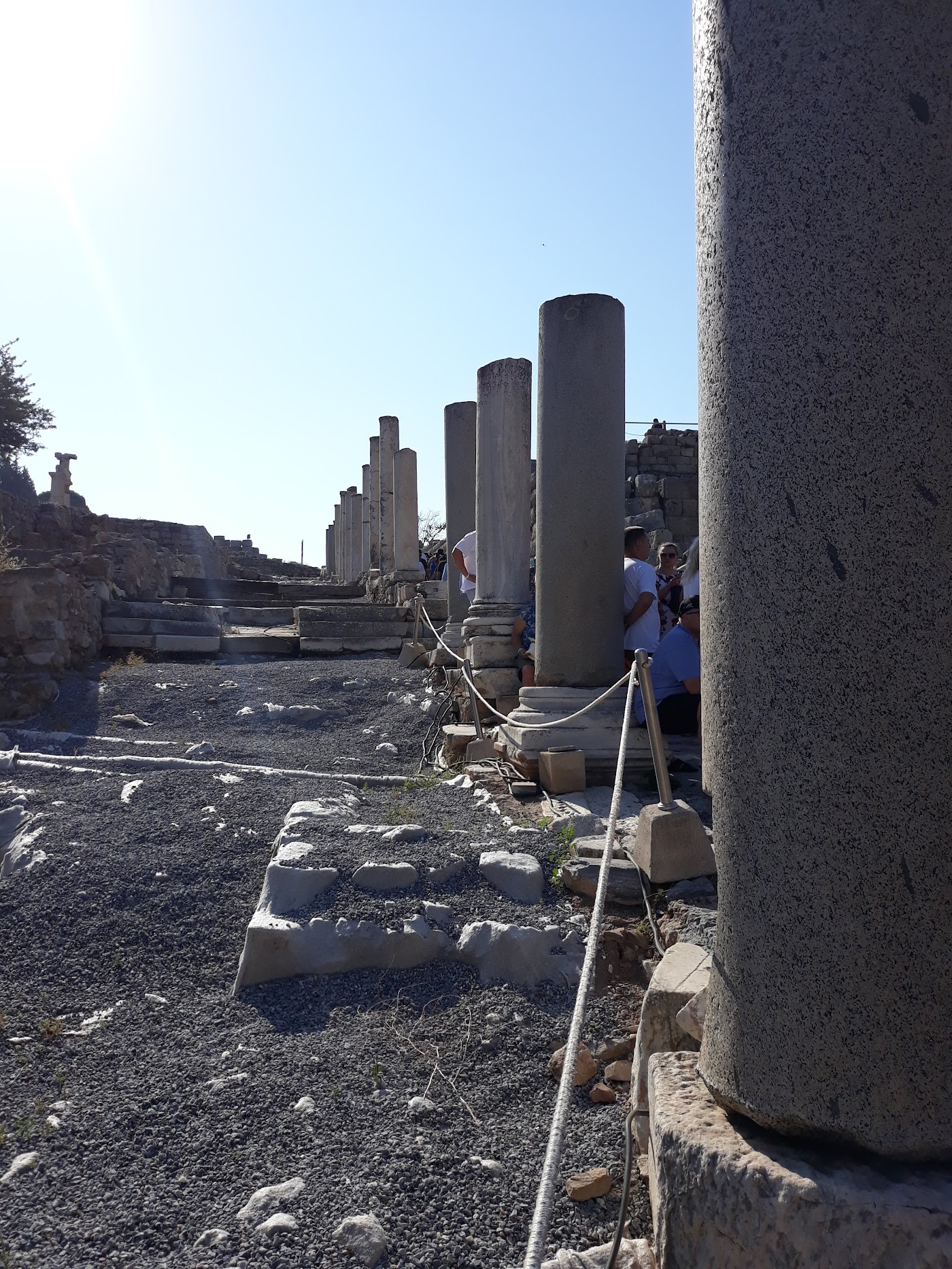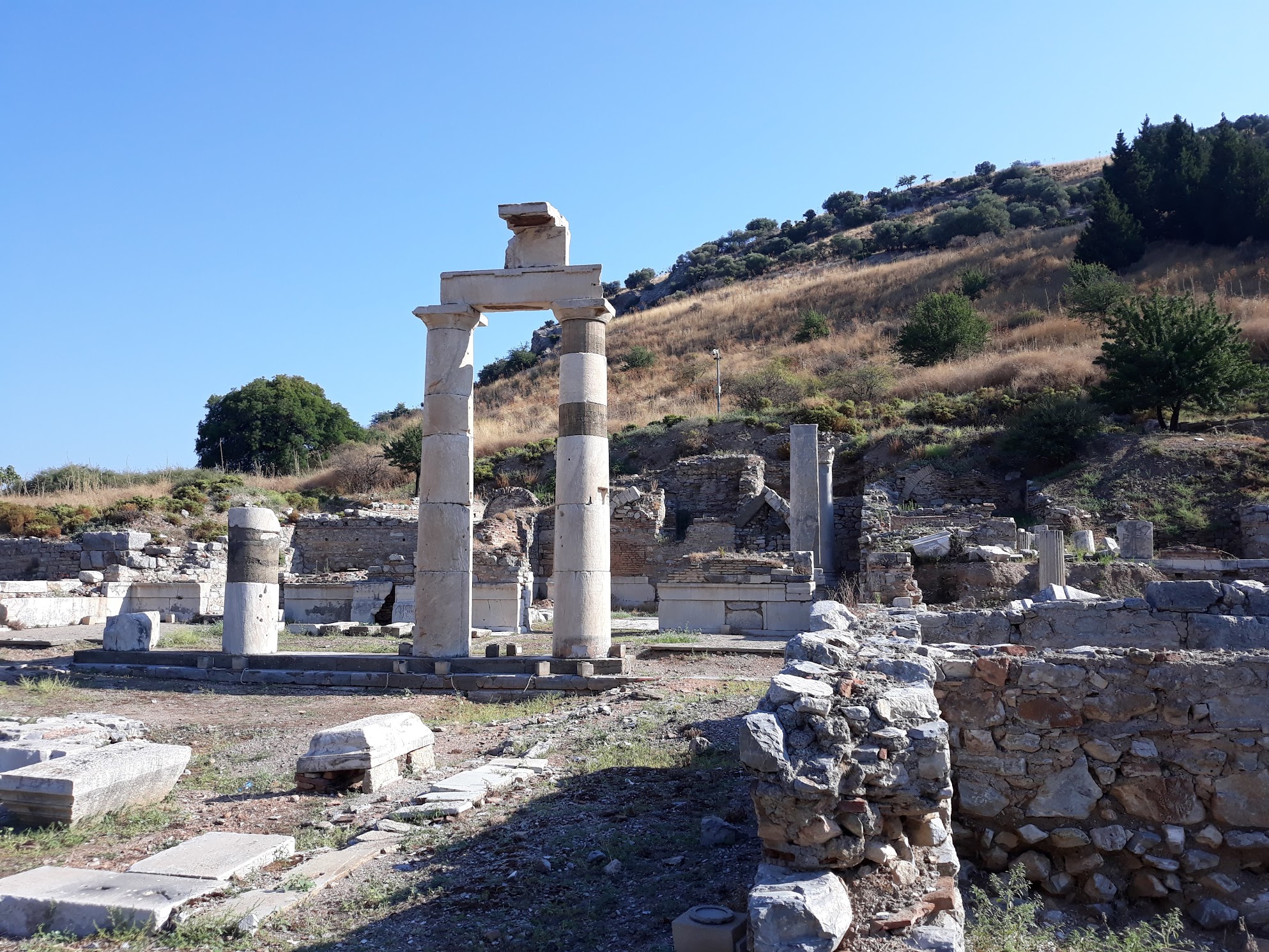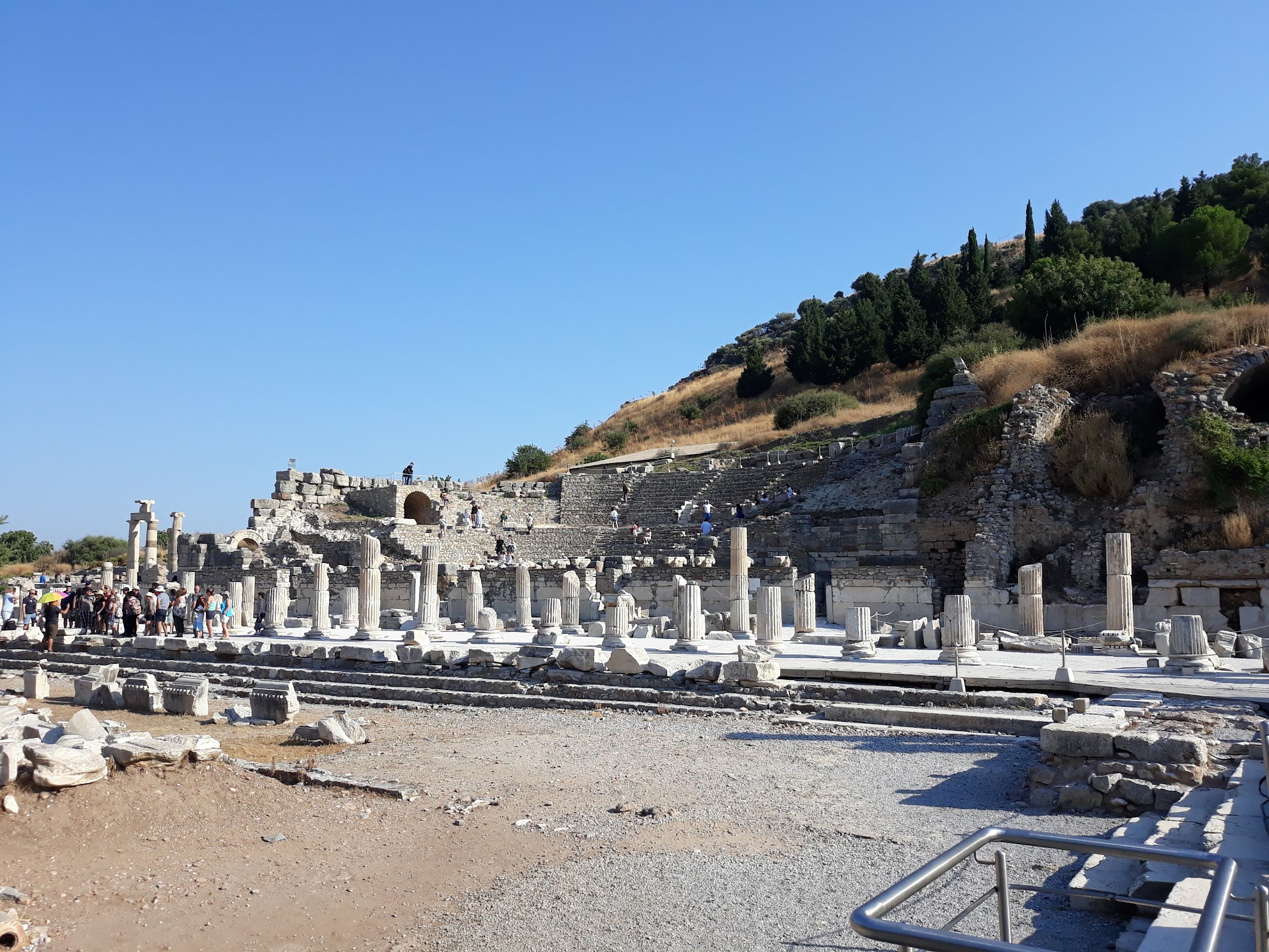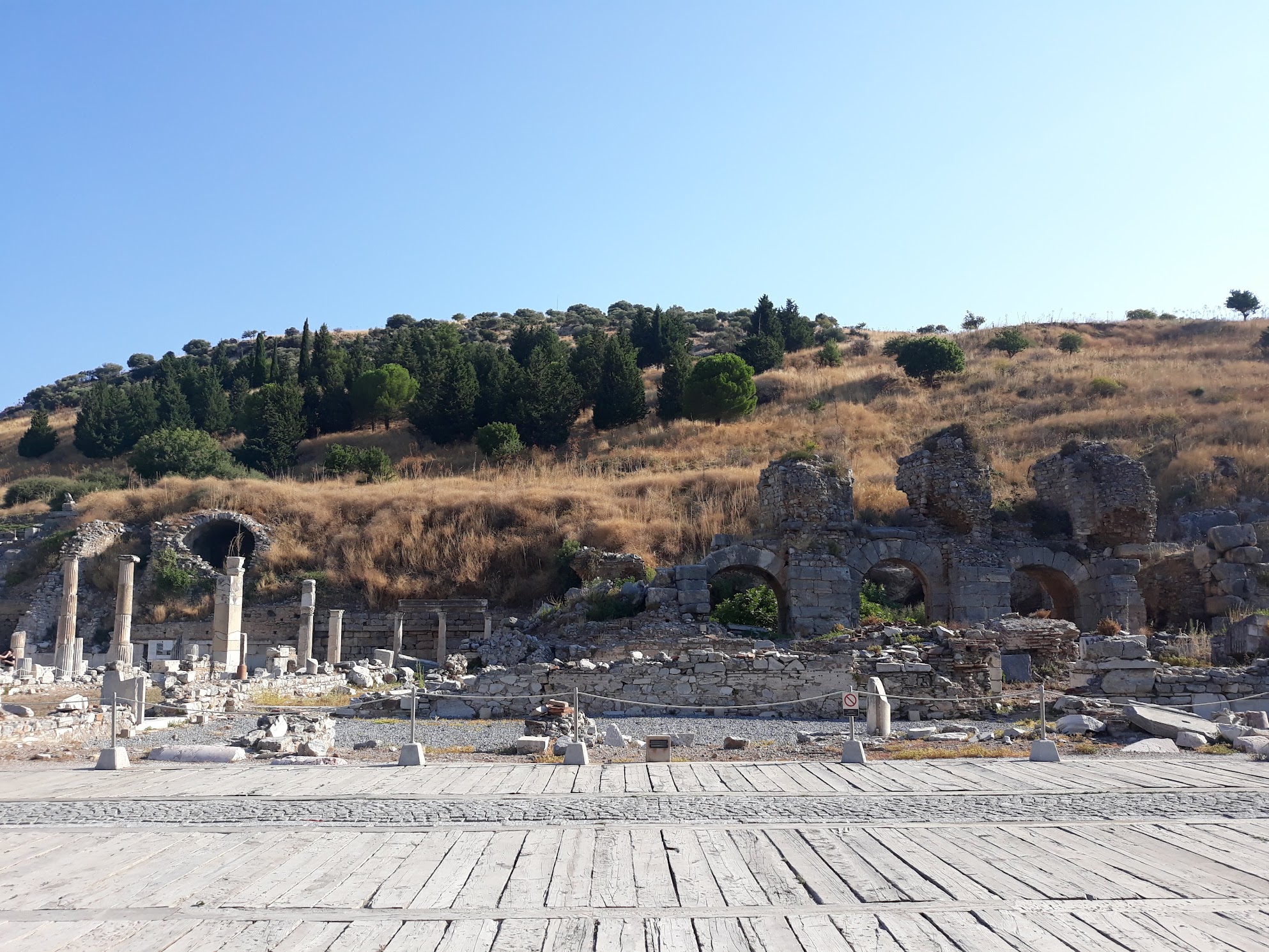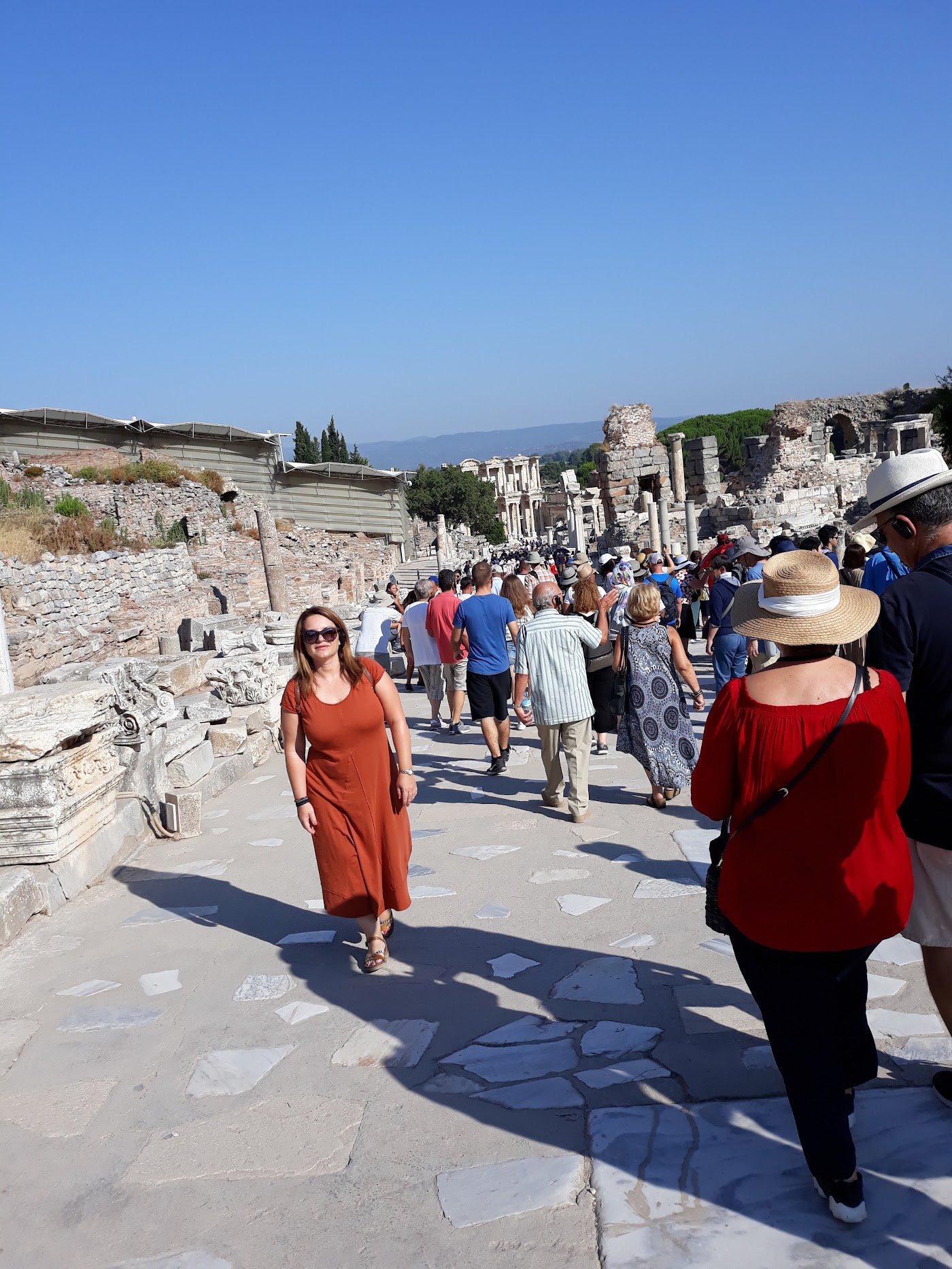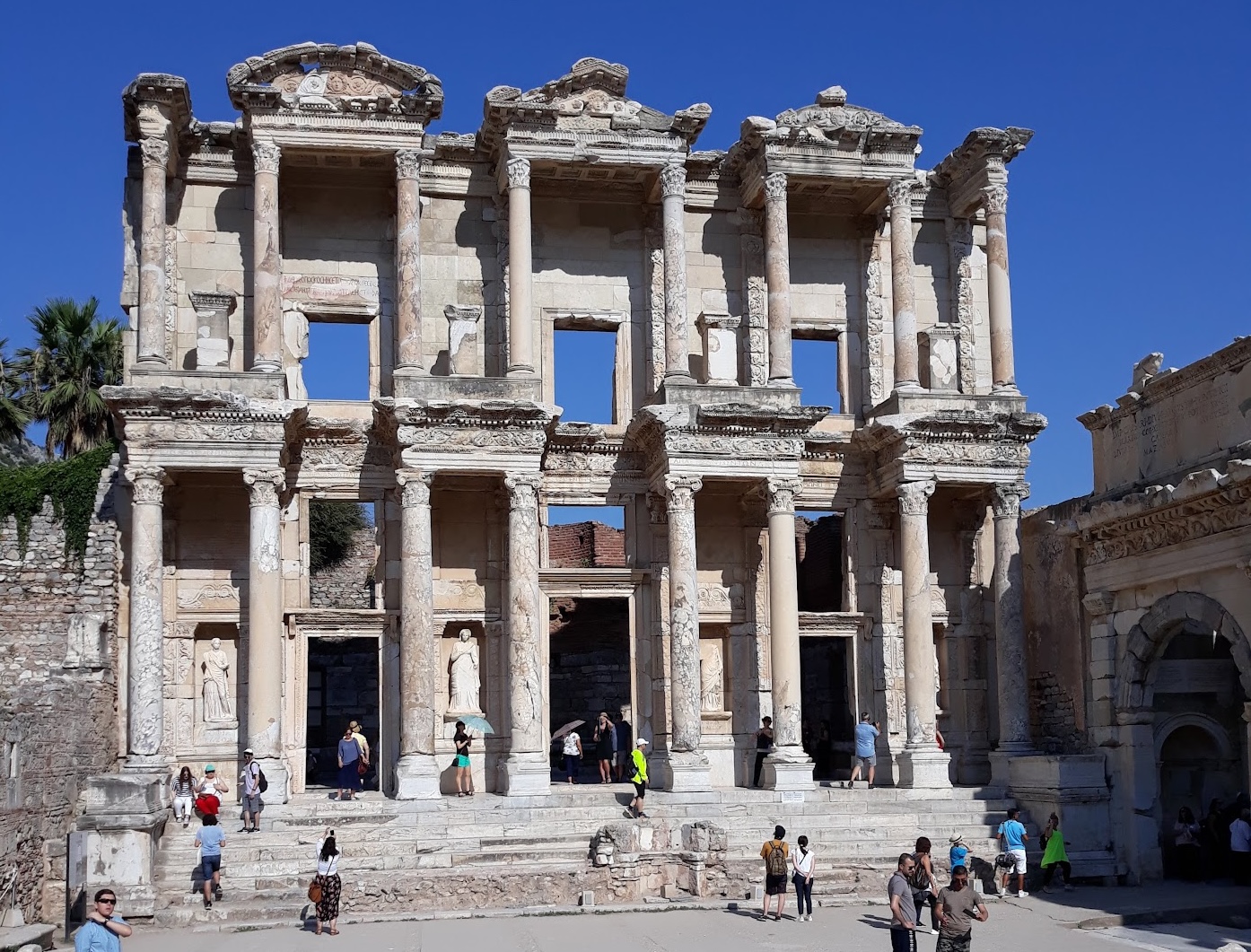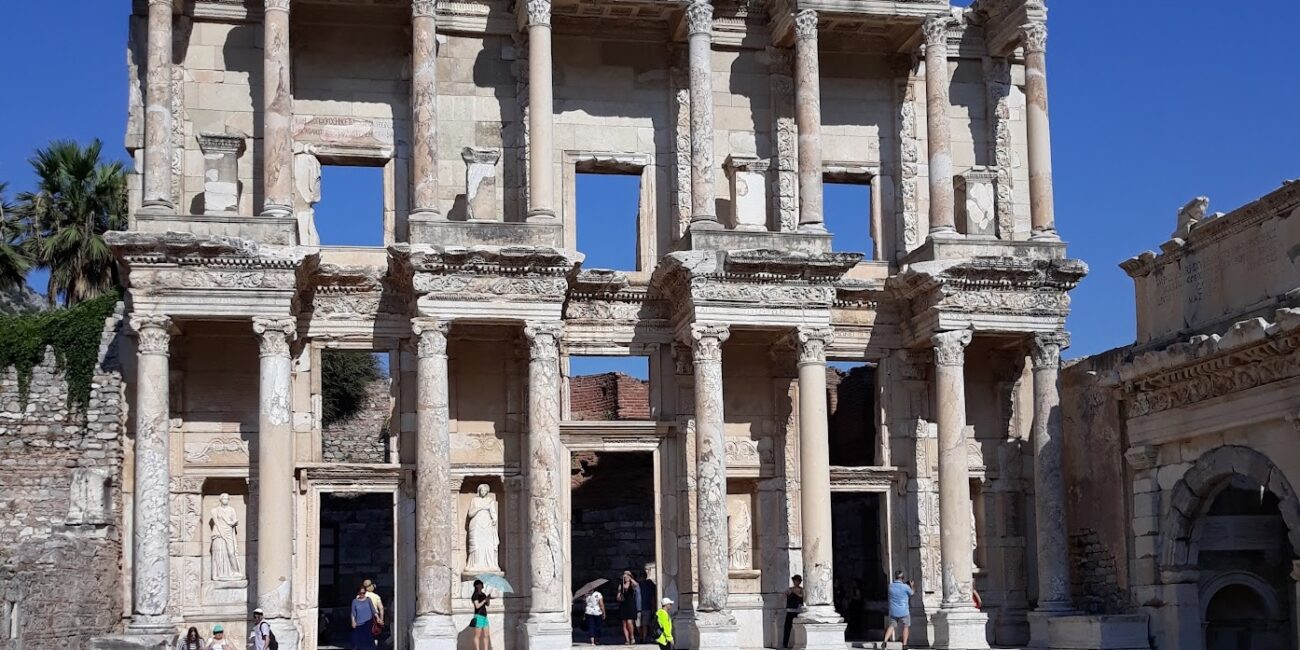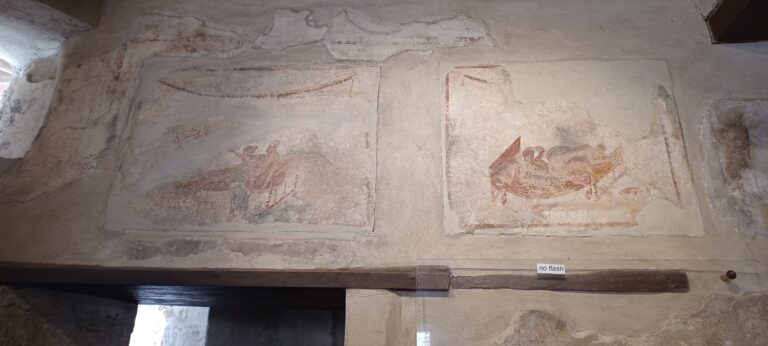Under the scorching sun of Asia Minor, in a landscape that smells of thyme, timelessness, and culture, the magic of ancient Ephesus unfolds before your eyes. A living museum beneath the open sky, a vast open-air stage that preserves the memory of human civilization every time someone walks through it.
As you begin your journey among arcades, Roman markets, and the foundations of noble residences, you feel the heavy shadow of antiquity embracing you. You walk on the very stones once trodden by merchants, philosophers, and travelers more than 2,500 years ago. The columns to your left and right stand proudly, with detailed carvings and time-worn edges—as if they still carry the weight of history with dignity.
And then, it appears before you. The Library of Celsus. Not merely a building, but a symbol of knowledge and intellect. Its ornate façade, marble columns, and the four female statues embodying Wisdom, Knowledge, Virtue, and Thought, captivate your gaze. You stand in awe, unable to look away.
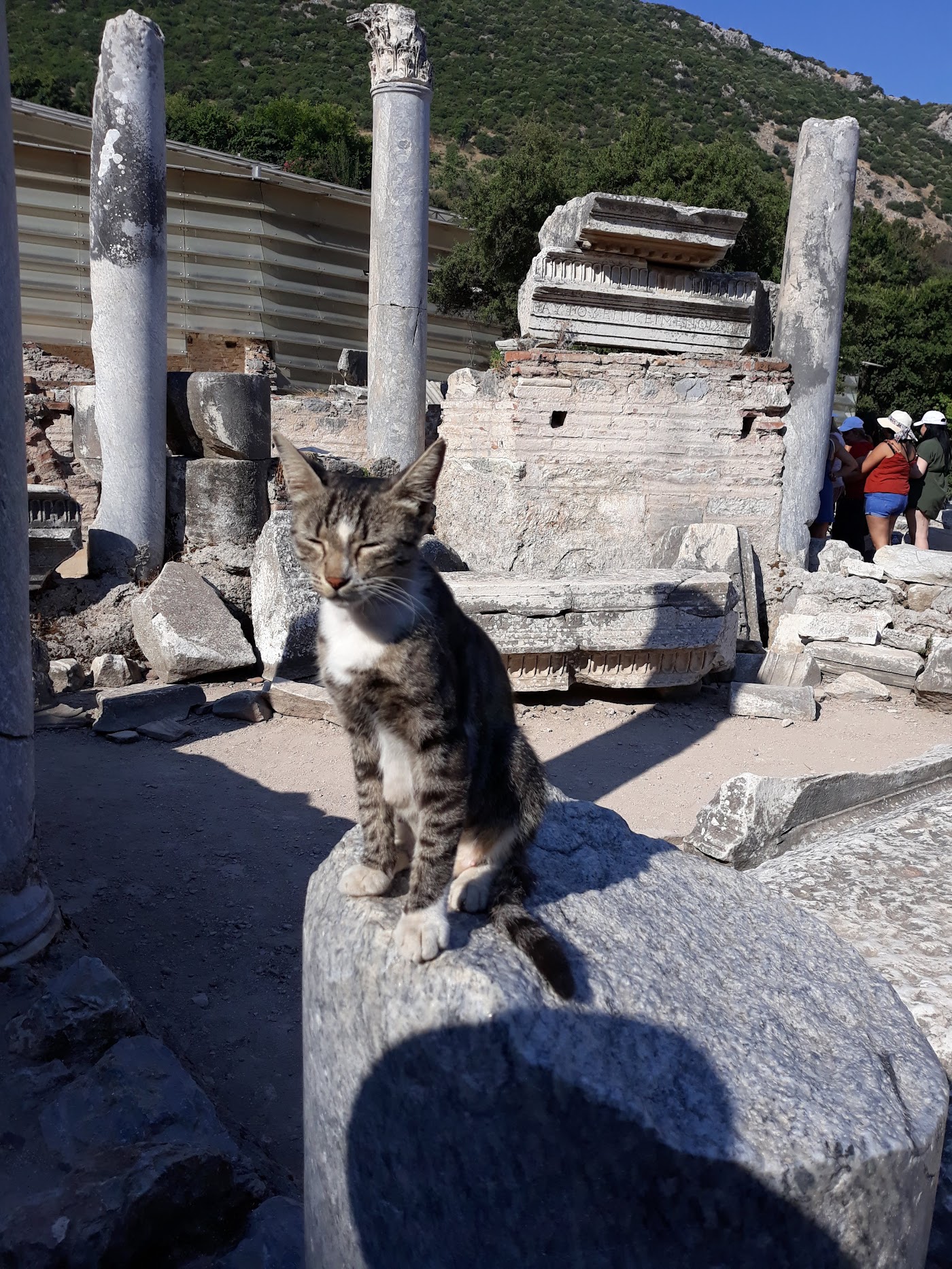 Somewhere among the ruins, an unexpected resident: a cat. Calm, imposing, resting upon an ancient drum, as if guarding the secrets of the past. You glance at her and smile—she seems to whisper that the past is not gone here; it still lives… silently.
Somewhere among the ruins, an unexpected resident: a cat. Calm, imposing, resting upon an ancient drum, as if guarding the secrets of the past. You glance at her and smile—she seems to whisper that the past is not gone here; it still lives… silently.
The scenes shift constantly. From the Gate of Hercules, with its impressive reliefs of the mythical hero in dynamic motion, to the Grand Theatre of Ephesus—one of the largest of the ancient world, with a capacity of 25,000 spectators. It is said that the Apostle Paul once preached here, and to this day, it feels as if voices still echo—if only in your imagination.
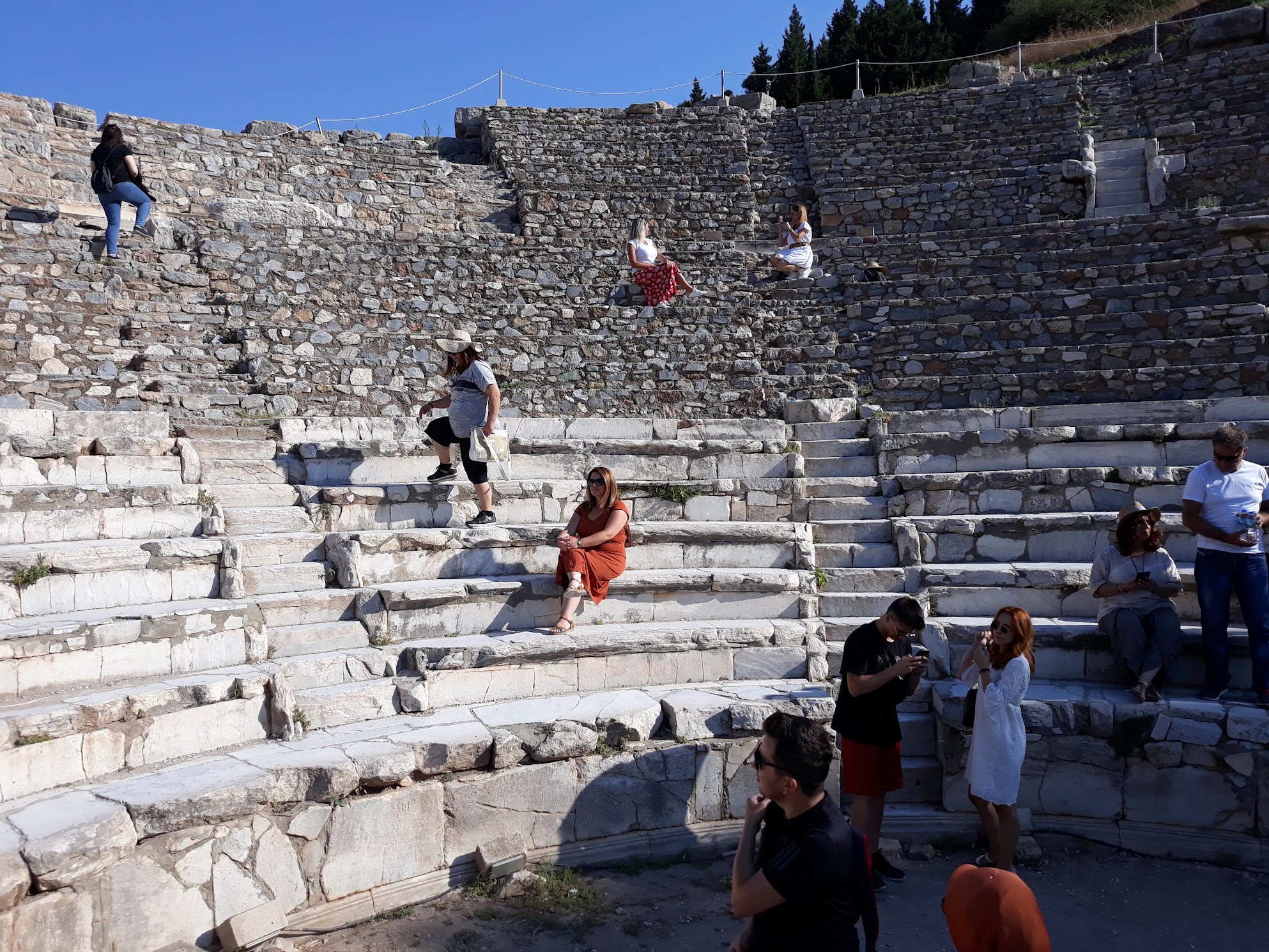 This journey is a blend of architectural grandeur and natural serenity. The sunlight dances on the marble, transforming it into something sacred. The low hills, the dry greens of Mediterranean flora, the scent of dust and time… all create an almost reverent atmosphere.
This journey is a blend of architectural grandeur and natural serenity. The sunlight dances on the marble, transforming it into something sacred. The low hills, the dry greens of Mediterranean flora, the scent of dust and time… all create an almost reverent atmosphere.
Ephesus is not just a dot on the map. It is a profound experience, a walk through time that invites you not just to observe—but to feel. To listen. To travel back to an era when civilization wasn’t just an idea—it was a way of life.
Every image you capture becomes a part of you, a reflection of your soul upon the stone. Moments when you stand before thousands of years of history and realize, in a strange and beautiful way, that you have become a part of it too.
Tips for Visiting Ephesus:
-
The best time to visit is early in the morning or late in the afternoon to avoid the intense heat.
-
Bring a hat, water, sunscreen, and comfortable walking shoes—the site is vast.
-
If possible, choose a guided tour with an archaeologist or historian. It will completely change the way you experience the site.
-
Allow at least two hours for your visit—you’ll likely want to stay longer.
Dedicated to Katerina K., who walked beside me on this unforgettable journey.
